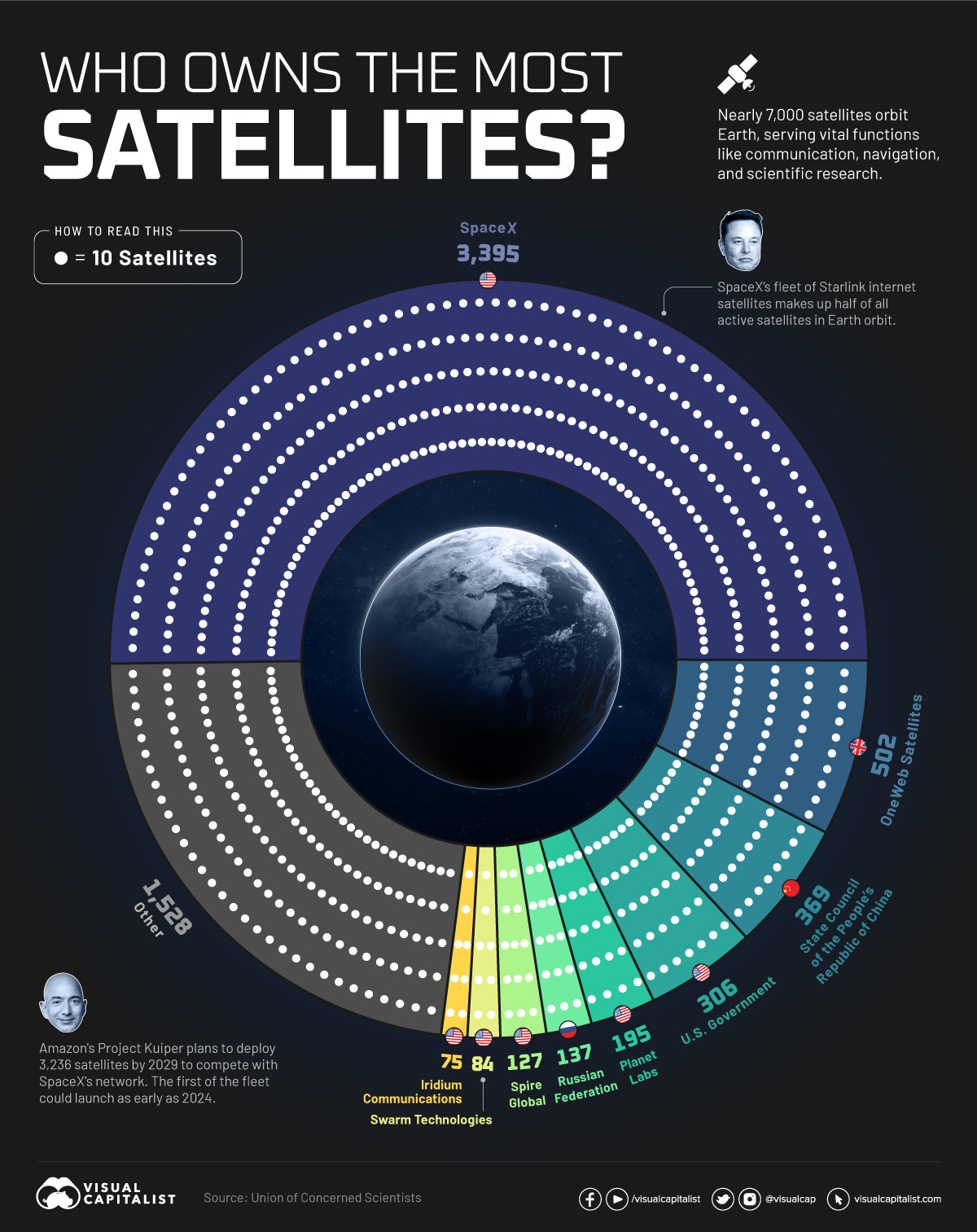Which Companies Own the Most Satellites?

Starlink carbon footprint up to 30 times size of land-based internet ($): A corrida espacial que está a ver a SpaceX, a Eutelsat e a Amazon lançarem milhares de satélites capazes de fornecer serviços de Internet terá provavelmente um custo ambiental significativo. Foi o que concluiu a primeira tentativa de calcular a pegada de carbono associada às operações de cada empresa.
A análise, efectuada por investigadores dos EUA e do Reino Unido, concluiu que a pegada de carbono de cada constelação de satélites é potencialmente 14 a 21 vezes superior por assinante de Internet às emissões associadas à Internet móvel terrestre – principalmente devido às emissões com o dióxido de carbono e o monóxido de carbono no lançamento dos foguetões.
Além disso, o potencial poluente dos serviços de Internet via satélite pode, de facto, ser muito superior a este cálculo inicial.

Starlink Satellites Are ‘Leaking’ Signals That Interfere With Our Most Sensitive Radio Telescopes
FAA Warns That Falling Satellites Are Going to Start Killing People: In a report to Congress made public last week, the agency claims that by 2035, some 28,000 fragments from Starlink satellites falling back to Earth could survive re-entry each year. That has unsettling implications. With so much debris, the report concludes, the chance of a stray satellite fragment hitting and killing someone on the ground will rise to 61 percent each year.
Sustainability assessment of Low Earth Orbit (LEO) satellite broadband mega-constellations: Importantly, phase 2 constellations propose to increase the number of satellites by an order-of-magnitude higher, highlighting the pressing need to mitigate negative environmental impacts. Strategic choices in rocket design and fuel options can help to substantially mitigate negative sustainability impacts.
